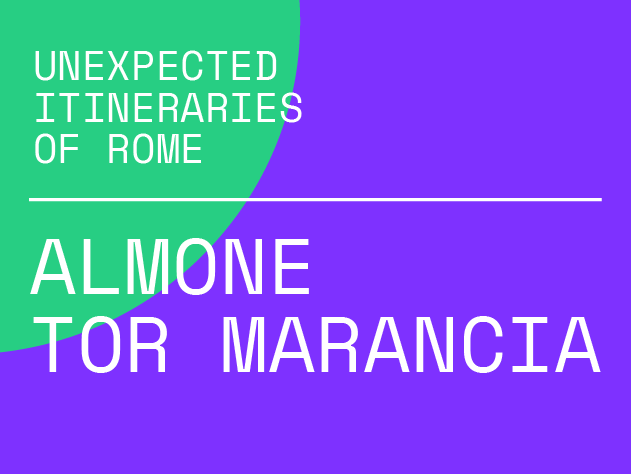
Itinerary features
The itinerary retraces the course of the Almone river - sacred to the ancient Romans, now buried in the stretch from the Caffarella to the Tiber - starting from the Gazometro in the characteristic Ostiense district with its typical Porto Fluviale murals, and then crossing the Parco della Caffarella to the Domine Quo Vadis church and the catacombs of St. Callistus.
On a route of just over 6 kilometres, numerous historical-archaeological and industrial archaeological testimonies can be found; the Parco della Caffarella, Rome's boundless protected green area, is rich in botanical-naturalistic elements and areas of interesting biodiversity.
The itinerary, which you can also follow in the opposite direction, can be divided into the following two routes:
- the first tells the story of the Ostiense district, the result of an interesting urban redevelopment project in which street art, industrial archaeology and daily life merge, where you can still breathe the air of the old local markets. This route starts at the Gazometro, symbol of this district, crosses the urban area and enters the green Valle della Caffarella, following the imaginary course of the Almone river, which runs underground in this section;
- the second one winds entirely in the Parco della Caffarella, where nature is the protagonist together with industrial and classical archaeology. From Parco Scott you cross the former industrial area of the Cartiera Latina along the stretch of the Almone river, which finally becomes visible again, and then enter and get lost in the luxuriant nature of the Parco della Caffarella (belonging to the Parco Regionale dell'Appia Antica), surprising for its diversity of flora and fauna, with birdwatching spots.
Points of interest of the itinerary
Gazometro
Built between 1935 and 1937, Rome's Gazometer, the most imposing in Europe with a capacity of 200,000 cubic metres of gas, was called a “telescope” because inside it had an enormous cylinder that inflated and deflated, showing the amount of gas it contained. Starting in the 1960s, with the spread of the use of methane, a natural and safer gas, it was gradually decommissioned but continues to be a recognisable and beloved element of the city skyline.
Murals
In the Ostiense district, art meets the contemporary thanks to the murals of Porto Fluviale. An open-air museum for art lovers and anyone who wants to immerse themselves in the vibrant culture of contemporary Rome. Porto Fluviale's Street Art is an invitation to reflect on the present, question the future and look at the world with new eyes. A living art, constantly evolving, that dialogues with Rome and its inhabitants.
Centrale Montemartini Museum
It was Rome's first public electricity generating plant and today is an extraordinary example of the conversion of an industrial archaeology building into a museum. The building is a thermoelectric power station dating back to 1912, converted into a museum in 1997. Inside are sculptures, mosaics and archaeological finds from the Roman era belonging to the Capitoline Museum Collections. Visiting the Centrale Montemartini is like travelling back in time through the history of Rome: starting from the oldest works of art, from the Rome of the Republican age with precious sculptures and mosaics that adorned the rich private residences, to the modern industrial city told through the machinery and furnishings still present inside, pertinent to the building's first function. One room is dedicated to the exhibition of the three wagons belonging to the train of Pius IX, from 1858. The juxtaposition of ancient sculptures against the industrial backdrop of the power station creates a striking visual contrast, allowing you to admire ancient Roman statues and works of art displayed alongside huge turbines and engines from the early 20th century.
Settimia Spizzichino Bridge
The huge 240-metre-long arch bridge connects the Garbatella and Ostiense districts by two large steel spans painted white. Built over the tracks of the Metro B and the Roma-Ostia Lido railway, it has separate lanes for cars, buses and bicycle paths in both directions. Inspired by Spanish civil engineering projects, it is reminiscent of structures such as Seville's Ponte de la Barqueta and Santiago Calatrava's arch bridges. The striking night lighting is created with white exterior lights and variable-coloured LED interior lights.
The event is part of the Unexpected Itineraries of Rome project - CUP J89I22001930001 - Financed by the Measure Grandi destinazioni per un turismo sostenibile (Sheet No. 51) of the Ministero del Turismo's Development and Cohesion Plan (PSC), approved by CIPESS resolution No. 58 of 3 November 2021.
Unexpected Itineraries of Rome
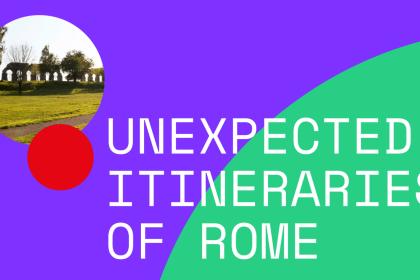
Seven unusual itineraries to discover the city from new perspectives
Unexpected Itineraries of Rome - Osa-Gabii and San Vittorino Itineraries
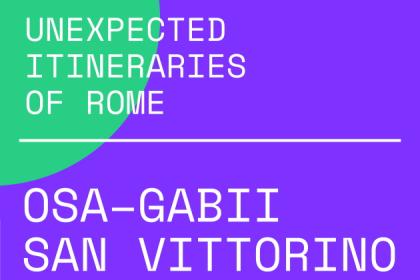
 Condividi
Condividi
Unexpected Itineraries of Rome - Esquilino Itinerary - from Santa Croce in Gerusalemme to the Ex Acquario Romano
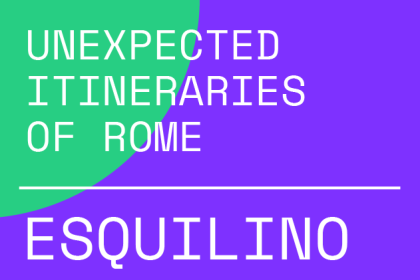
 Condividi
Condividi
Unexpected Itineraries of Rome – Tor Fiscale-Acquedotti

 Condividi
Condividi
Unexpected Itineraries of Rome - Parco dei Martiri del Forte Bravetta Itinerary
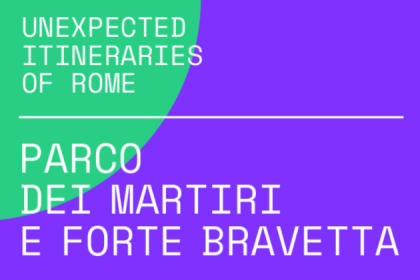
 Condividi
Condividi
Informaciones
 Condividi
Condividi











































